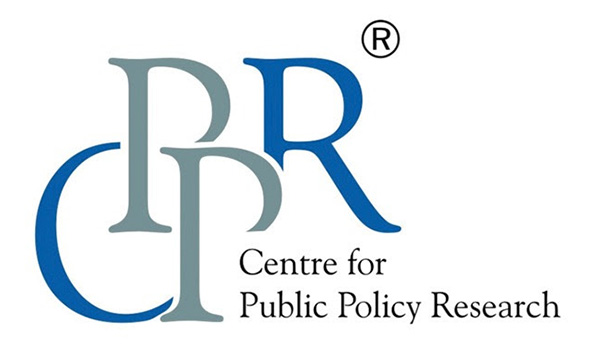Articles

Book Discussion of “Fourth Industrial Revolution Technologies: Maritime and Naval Operations” by Dr. Vijay Sakhuja
July 15, 2021
CPPR Annual Report FY 2020-21
July 16, 2021Mapping COVID-19 casualties in G7 countries: Lessons from Japan

Introduction
G-7 countries are the most advanced industrial democracies of the world. Member countries are Canada, France, Germany, Italy, Japan, the UK and the US. Ever since their formation in 1975, G-7 countries functioned like the global elders to guide the political direction, global economic governance, international security, energy policy and much more. World couldn’t do without them.
Using empirical evidence of Covid-19 fatality, this article analyzes G7 countries’ death toll for understanding patterns and their connotations. Covid-19 pandemic affected G7 countries as much as it did to the rest of the world. In Figure 1, G-7 countries’ casualties’ data per million is plotted against 15 months duration from March 2020 to July 2021, in a time series graph to analyse the trends. Figure 2 shows the total share of casualties in G7 in the world.
G-7 Casualties and Pattern Analysis
According to Figure 1, G-7 Covid-19 casualties present three clear patterns –
- The USA, UK and France, the three most powerful countries, suffered the heaviest death toll along with Italy.
- Canada and Germany come next with lesser casualties.
- In spite of Japan’s proximity to China and huge bilateral trade and transport connectivity, Japan suffered the least death toll compared to its heavy weight counterparts within the G-7 block.
The United States of America, the so-called strongest nation, seemed to come down on its knees. Britain was hard hit too preceding France. Italy was the early Covid-19 outpost and suffered countless casualties.

Canada and Germany experienced lesser casualties. While Canada contained the transmission of corona virus by ensuring social distancing, Germany implemented lockdown a little later. They managed the crisis by carrying out rapid tests. Frequent testing helped identify infection early, thereby reducing the death toll. With the exception of Japan, nationwide lockdown was a common trend.
In-short, G-7 countries recorded 28% of global Covid-19 death toll (Fig.2) which possibly could question the so-called global elite’s state of vulnerability to crisis situations.
Lessons from Japan
While developed and developing countries were debating on the scope and degree of lockdown, in the very early stage of pandemic, Japan declared that politically and constitutionally they can’t impose restrictions and lockdown, a case that stands out. Japan’s layered responses like government-citizens-technology-human labour, all played a significant role in curbing the crisis. As a result, the Japanese casualties were mostly restricted to their elderly population.
Japan traditionally is a very conservative and yet disciplined country. Even without the government’s imposition, people diligently follow social distancing norms. As a result of its location, Japan regularly suffers from a series of natural disasters like tsunami and earthquake which possibly may have helped to evolve a culture of crisis management, calmness and discipline in the Japanese society. Covid-19 management experience therefore was far better.Hospitals in Japan including those in rural areas generally provide smooth and equitable hospital access including hassle free reimbursement using Universal Health Insurance (UHI). The Japanese government ensured that there were enough COVID‐19 response committees in local governments to increase the number of COVID‐19 consultation centres. The state involved robots for patients’ care to restrict human interaction. The government used tele-working and coronavirus tracing app COCOA. Timely use of science and technology made policy measures effective. (Muto & Yamamoto, 2020)
The state also enhanced public risk communication and fostered mutual investigations and information sharing. In January 2021, the government scaled-up the whole intergovernmental coordination mechanism and there were units to supplement people with advice at every level.
Conclusion
Japan had only a 2.8% fatality rate during the peak in April 2021, far lower than other nations. The main focus of Japan was to maximize suppression of coronavirus and to minimize socio-economic damage. It avoided an explosive increase in patients that would exceed the limit of intensive or critical care units. Japan never tried eliminating the pathogen, instead it promoted a ‘new normal’.
The three lessons from Japan’s model are- (1) Any strategy should be localised (2) People should cooperate with the government, and (3) Any resource is valuable if it is used wisely and timely. Japan shows discipline is the key to fight any crisis.
Works Cited
KPMG. (2020, December 02). Government and institution measures in response to COVID-19. Retrieved June 20, 2021 from KPMG: https://home.kpmg/xx/en/home/insights/2020/04/japan-government-and-institution-measures-in-response-to-covid.html
Muto, K., & Yamamoto, I. (2020). Japanese citizens’ behavioral changes and preparedness against COVID-19: An online survey during the early phase of the pandemic. PLOS ONE. Retrieved June, 2021 from https://doi.org/10.1371/journal.pone.0234292
Sayeed, U. B., & Hossain, A. (2020). How Japan managed to curb the pandemic early on: Lessons learned from the first eight months of COVID-19. Journal of Global Health, 8.
Statista. (2021). COVID-19/Coronavirus. Retrieved June 10, 2021 from Statista: https://www.statista.com/page/covid-19-coronavirus
This article was written by Aastha Rathi and Saumya Avasthi under guidance of Dr. R P Pradhan, CPPR Distinguished Fellow
Views expressed by the author are personal and need not reflect or represent the views of Centre for Public Policy Research.

